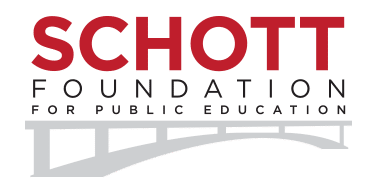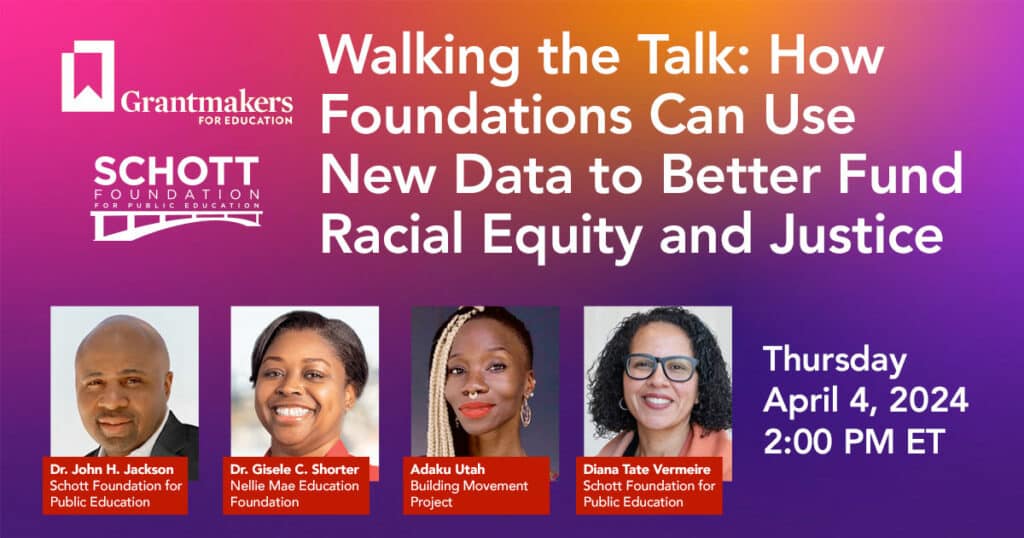Press Release
Schott Foundation Response to the State of the Union Address

Right Destination, Wrong Vehicle
Make no mistake, President Barack Obama understands the critically important link between quality education and a strong future for our country. The President’s State of the Union address placed education as a cornerstone of sustaining and growing our country’s democracy and economy. The President used the address as an opportunity to claim this as America’s “Sputnik moment” and reiterate his “man on the moon” goal that America will have the highest proportion of college graduates in the world by 2020.
A 2010 Lumina Foundation report indicates that to achieve this goal by 2025, 60 percent of the U.S. population between the ages of 25-64 would need a post-secondary education—far more than the 37 percent in the United States that have achieved that goal. Lumina also predicts that to achieve this five years later than the President’s goal, the United States would need another 23 million graduates above the current number.
While a difficult challenge, this is absolutely the right goal and destination for America. As the President noted, “Over the next ten years, nearly half of all new jobs will require education that goes beyond a high school degree. And yet, as many as a quarter of our students aren’t even finishing high school.”
Schott applauds the President for refocusing the nation on this audacious goal.
Recognizing the size and depth of the challenge that states, districts, schools, teachers, parents, and students are being called to address, with an equally high level of resolve Schott rejects the President’s call to use Race to the Top (RTT) as the approach to follow as we reauthorize the Elementary Secondary Education Act (ESEA)/No Child Left Behind law. This approach will not meet that goal.
Piecemeal programs like RTT, that require states to compete for resources in the form of grants, have not systemically solved the problem over the past two years, nor will they in the future. The role of the federal government is not one of a foundation, but as an agent of the people working to ensure opportunities for all. To date, 39 states either were non-participants or losers in RTT. How can the United States win if 39 states lose, let alone stay on a trajectory to increase the number of college graduates by 23 million above the current number? After two years of implementation and allotting close to $4 billion dollars, the initiative has only distributed resources in states that touch 24% of African American students, 15% of Latino students, 5% of Asian students, 0% percent of American Indian students, and 6% of ELL students. Additionally, poor rural states and their students have been grossly underrepresented in RTT.
In this “Sputnik moment,” pairing the nation’s 2020 goal with a RTT policy frame is analogous to challenging the nation to reach the moon and forcing states and communities to develop their own rockets to get there. As one Long Island grandparent passionately stated after New York Gov. Cuomo announced a similar competitive plan for that state, “Our kids are not game show contestants where parents should be forced to compete on getting them in the right districts or schools.”
Education is a civil right and the federal government has the obligation to ensure all students’ right to an opportunity to learn are protected, whether in strong or strained fiscal climates.
A competitive-based frame like RTT works against the very purpose for which ESEA was created in 1965 as a part of President Lyndon Johnson’s War on Poverty—to prevent states, districts, parents, and America’s children from competing to have their right to an opportunity to learn protected. We urge the President not to lead America back to the pre-ESEA status quo days of states jockeying and politicking for federal funding; this approach has historically proven to do what the first two years of RTT has—leave poor, disadvantaged, and rural citizens behind.
The time has come for us to end the practice of avoiding the size of our challenge by creating limited initiatives like RTT that work only on the margins. As the President proclaimed, “America does Big Things,” and a race that only impacts 11 of 50 states is far from “big.” The big 2020 goal requires a plan with the breadth, depth, and scope to address systemic issues and place and sustain America on a trajectory to achieve the goal.
That plan must address the fact that the rate at which America suspends, expels, pushes out, and eventually incarcerates its youth and citizens is neither sustainable nor aligned with a country seeking to be a global leader by 2020. The United States leads all countries in the percentage of its citizens incarcerated.
The tone in which the country approaches the teaching profession or the rate in which teachers are being laid off or are leaving the profession is neither sustainable nor aligned with a country seeking to be a global leader by 2020.
The lost opportunities that result from denying the children of undocumented parents access to the resources needed to attend our colleges and universities, preparing them to help further build the nation’s capacity, is neither sustainable nor aligned with a country seeking to be a global leader by 2020.
The level of resource inequities and the lack of states’ capacity to administer educational reforms and initiatives are neither sustainable nor aligned with a country seeking to be a global leader by 2020.
The Schott Foundation calls upon the President to outline a comprehensive, evidence-supported plan outlining the policy proposals and investments necessary over the next ten years to systemically provide all students—in all states—an opportunity to learn.
We know how to provide quality education for every American child. Teaching professionals and American researchers developed proven methods for comprehensive education systems decades ago. Unfortunately, these methods and reforms have been primarily adopted and implemented by countries with education systems we now look to with envy—while the methods and reforms have been largely ignored here at home.
South Korea, China, Singapore, Finland, and Ontario, Canada all have outcompeted the United States by investing in core Opportunity to Learn components: (1) high quality early education for all; (2) holding their teaching professionals in high regard as “nation builders” by investing in the proper supports to build teachers up, not tear them down; (3) requiring students to meet high standards; and (4) providing more equitable distribution of its resources. These education reforms aren’t in the press as often as mass firing of teachers, or stories about a single school where students perform well, but they systemically open the doors of opportunity for other countries’ children and they can do the same for our children.
Schott is well aware that achieving these investments in this fiscal climate will require tough choices. One primary choice that must be made is between babies and books or bullets. Our national defense budget remains almost as much as the rest of the world’s defense spending combined. Lowering the deficit can’t be on the backs of our children and their opportunity. As the United States looks for ways to address our national debt and deficit, reducing education supports to states and districts is not the answer and only creates a greater national security challenge. The time has come for our country to choose whether we will be a generation that destroys or builds. Schott applauds the President’s willingness to reduce defense spending to address our fiscal challenges and calls on him to propose at least a 25 percent cut in the defense budget. Our nation’s educational future should be one of its greatest national security goals.
If our country is going to rise out of its strained economic climate, the next two years can neither be about the political left nor the right, but intently focused on the issue squarely in the center for so many in America—opportunity. While extending the “opportunity for success” can be primarily addressed in the short term by creating new jobs, the only sustainable way to ensure America’s social, democratic, and economic growth is by providing all in America a fair and substantive opportunity to learn, rather than only an opportunity to compete.


